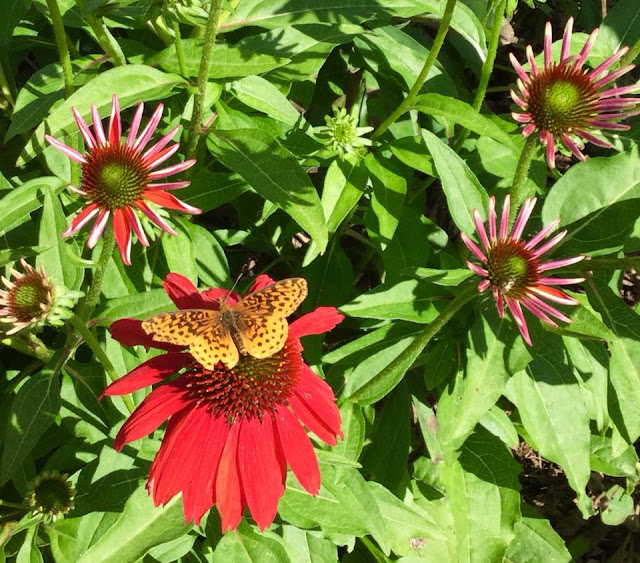 |
A new bell-buoy wind chime hangs to the right of the sign.
The number 2014, on the post, represents the year work started on the park, in October.
|
In March, 2018, when we first went to look for winter damage, it seemed that winter was still here!
There were some new additions to the park this year. It's a good thing they were all donated, because this summer began with the park completely out of money!
(However, the money problem was solved, at least for a while, later in the summer of 2018. The Pocket Park received a grant from the Jack and Dorothy Byrne Foundation and a generous gift from a local resident.)
 |
Vince Robinson helps Brian Johnson erect the park's new information kiosk.
Brian built it, and the Strafford Lions Club covered the cost.
|
 |
The finished kiosk.The park map was created by Will Cooney;
the information sheets were written and designed by Cat Buxton and Cedric Rule-Becker.
|
 |
Thanks to John Freitag and his grandson Mallku for installing trash and recycling containers.
Now no more trash in the blue water barrels! |
 |
| We brought this prayer-catcher home from Mexico; it hangs near a picnic table |
Also in 2018, at a ceremony in Montpelier on Arbor Day, the Strafford Edible Pocket Park was honored to receive a Vermont Tree Steward Award for a volunteer project.
In May a group of Newton School students helped out on Operation Days Work, sponsored by Rebecca Seibel and Greg Bagnato. They hauled huge quantities of wood chips donated by Eli Mintz, Old City Tree Services. The chips are mulch for beds and boundaries.
Newton elementary school students were among the first visitors to the park in the spring. Strafford Preschool students visit the park every week.
By early summer, the grass was green and the park was looking more like it should.
Last year, the Strafford's Newton Fund covered the cost of the new garden shed, below, and a lawnmower. This year, the shed and mower are proving to be just as useful as we hoped.
By midsummer, pollinators were at work. The cone flowers (echinacea, below) are particularly attractive to bees and butterflies.
 |
| A treat for the birds |
Fruit trees and berry bushes are yielding this year. Berries are most plentiful, but we've asked people not to harvest quantities for home use; the idea is to nibble in the park and always leave enough to share.
 |
| Haskap, or Honeyberries. |
 |
| Black Currants |
 |
| Blueberries |
 |
| Gooseberries, which taste like cinnamon |
 |
| Apples at last |
 |
| Plums |
 |
| Our first (and only) pear |
Flowers in the park have useful functions -- attracting and supporting pollinators -- and making the park a happy place for people.
 |
| Lilac |
 |
| Allium |
 |
| Chicory |
 |
| Oriental Poppy |
 |
| Echinacea |
 |
| Lupine |
In summer, early morning and late afternoon to early evening are the best times in the park. The photos below were taken at an evening picnic.
It's wonderful to see the park being used. Below are girl scouts, and then a family enjoying the river. We're so lucky that the park is on the banks of the Ompompanoosuc.
Pre-schoolers and their teachers celebrate a few ripening apples on a tree by the tennis courts.


























